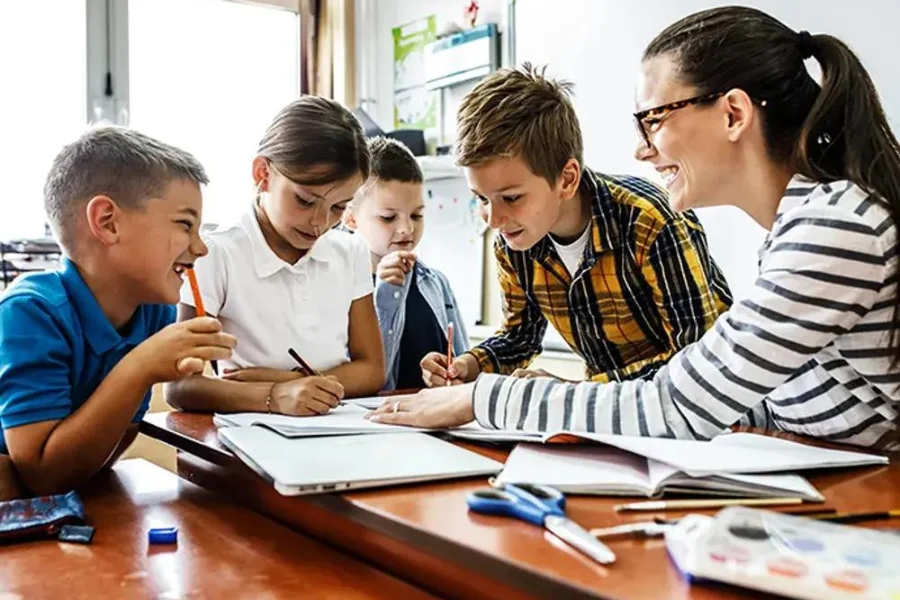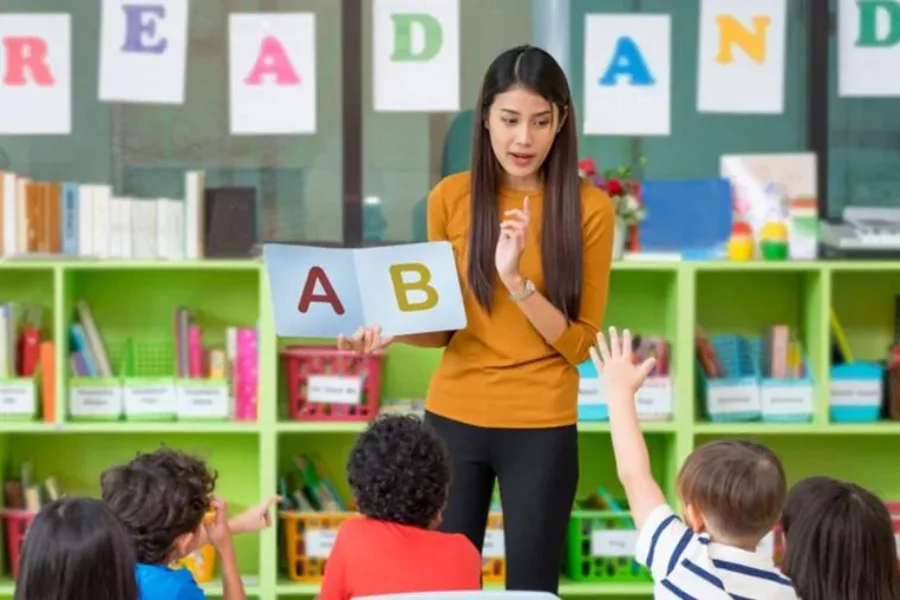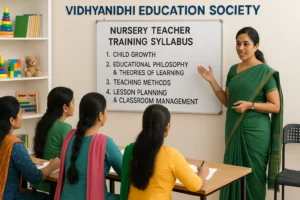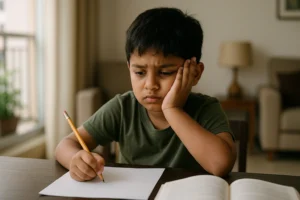
Source: lightingupliteracy
Individuals passionate about Early Childhood Education and teaching can pursue a Playgroup Teacher Course to acquire the skills required to foster the initial developing years of young children. The Eligibility for Playgroup Teacher Course demands candidates to be 18 years of age with a minimum HSC level of education, Institutes like Vidhyanidhi Education Society (Govt. Regd.) offer comprehensive training programs and provide grounding knowledge to aspirants required to excel in this fulfilling career. By meeting the eligibility guidelines, you can take a significant step toward shaping young minds through a Playgroup Teacher Course.
How to Teach Play Group Students?
Teaching Play Group Students requires a delicate balance of care, creativity, and structure. This phase is foundational for a child’s overall growth, making it essential to adopt strategies that align with their developmental needs.
Here are detailed steps with examples to effectively teach Play Group Students:
Understand Child Development
Children in the playgroup stage are naturally curious and learn best through exploration and interaction.
Example: If children are beginning to develop motor skills, introduce activities like stacking blocks or threading beads to strengthen hand-eye coordination. If they are learning to communicate, encourage them with songs or rhymes that involve simple words and repetition.
Implement Play-Based Learning Activities
Play-based learning supports the overall growth of children by offering structured play and making education interactive.
Example: Create a “nature corner” where children can explore the textures of leaves and pebbles. Use puzzles to teach shapes and colors, or organize pretend play sessions like a mock grocery store where children can learn basic math concepts like counting objects.
Foster Social and Emotional Development
Helping children build relationships and understand emotions is critical at this age.
Example: Conduct group activities like circle time, where children take turns sharing something about themselves. For emotional understanding, use stories with characters experiencing different feelings and ask children how they think the character feels and why.
Display Organized Classroom Management Techniques
A planned routine of daily activities helps children understand what is expected of them and feel secure.
Example: Start each day with a “good morning song,” followed by a visual schedule showing the day’s activities. Use colorful charts or traffic light systems for behavior management, rewarding positive behavior with stickers or praise.
Completing a Playgroup Teacher Course equips educators with the knowledge and techniques to apply these methods effectively. By mastering these skills, teachers can create a lively and supportive environment for young learners to flourish.

Source: javatpoint
How to set up a Playgroup?
Setting up a playgroup is a lucrative decision and an exciting journey for passionate individuals. To achieve success in this venture, thoughtful planning and dedication are required. Understanding the steps in setting up a playgroup will help create a fostering learning environment for young students.
Here’s a detailed elaboration to set up a playgroup:
Step 1: Evaluate Your Resources and Space
Begin by evaluating the space available in your home or another location to ensure it is suitable for a playgroup.
- The playgroup space has to be safe, secure, and with appropriate airing.
- Create a list of essentials such as child-safe furniture, toys, art supplies, books, and educational materials.
Step 2: Plan a Child-Centric Environment
Organize the space to cater to the developmental needs of children.
- Use bright colors and cheerful decor to make the area inviting.
- Set up dedicated corners for reading, art, and imaginative play.
- Provide low shelves for toys and materials to encourage independence.
- Include a cozy nap corner with mats or cushions for rest.
Step 3: Create an engaging educational curriculum
A playgroup thrives on a well-structured yet flexible curriculum that focuses on holistic development.
Activities to Include:
- Sensory play, such as water or sand activities, to stimulate curiosity.
- Creative crafts activities to improve the fine motor skills of children.
- To build language and listening skills create activities that involve songs, rhymes, and storytelling.
Step 4: Seek Permissions or Legal Requirements
- Ensure your playgroup complies with local laws and regulations.
- Acquire required licenses or permits to operate.
- To create a secure and hygienic environment follow health and safety guidelines.
Step 5: Publicize and Entice Parents
- To attract parents to your playgroup, apply effective marketing strategies.
- Share engaging posts and updates on social media platforms.
- Distribute flyers in local communities or schools.
- Offer free trial sessions to showcase your approach to early childhood education.
Step 6: Engage Parents in Fun Activities
- Parental involvement strengthens the relationship between home and playgroup.
- Schedule regular updates about their child’s progress.
- Offer parents to partake in events, such as sports, cultural celebrations, or storytelling days.
- Organize parent-teacher meetings to discuss the growth of children and concerns.
Step 7: Stay Adaptable and Passionate
Early childhood education is ever-evolving, so adaptability is key.
- Stay updated with the latest trends in teaching through resources like a Playgroup Teacher Course.
- Regularly review your curriculum and teaching strategies to address the individual needs of children.
- Show enthusiasm and dedication in every interaction, leaving a positive impact on young learners.
Thoughtful planning and following these steps will benefit to set up a playschool that fosters the growth of children and learning to a new dimension. By acquiring Certification in a Playgroup Teacher Course, individuals fulfill the initial and crucial step toward achieving their goal of setting an outstanding playgroup.
Join Vidhyanidhi Education Society’s PPTTC Course and shape young minds brilliantly!
For more details of PPTTC Course, Call/Whatsapp on +919869546913 / +919869866277
To download brochure of PPTTC Course, Click Here!
PPTTC Course
FAQs
What Course Should I Do for Play School?
To become a playgroup teacher individuals can pursue a Playgroup Teacher Course from a recognized institute and acquire certification of training.
What Should Be the Syllabus for Playgroup?
A playgroup syllabus on cognitive development, fine and gross motor activities, social buildup through group activities, and language augmentation.
Which Age Is Best for Playgroup?
The best age to start a playgroup is between 2 to 3 years, as children’s brains are developing and are ready to adapt and learn surroundings.



